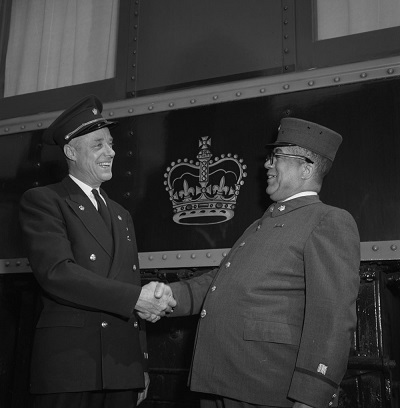Black Railway Porters and their Union Activity National Historic Event
Montréal, Quebec

Porter (right) and steward, 1958
© Library and Archives Canada | Bibliothèque et Archives Canada / National Film Board fonds | fonds de l'Office national du film / e011177028
Address :
1100 des Canadiens-de-Montréal Avenue, Montréal, Quebec
Recognition Statute:
Historic Sites and Monuments Act (R.S.C., 1985, c. H-4)
Designation Date:
1994-11-24
Other Name(s):
-
Black Railway Porters and their Union Activity
(Designation Name)
-
Railway Porters and their Union
(Other Name)
Research Report Number:
1994-042
Importance:
Broke new ground by gaining recognition for Blacks in labour relations and by making important contributions to the human rights movement in Canada
Plaque(s)
Existing plaque: 1100 des Canadiens-de-Montréal Avenue, Montréal, Quebec
Railway porters played a major role in the struggle for Black rights in Canada. Starting in the late 1880s, they emerged as leaders of African Canadian communities in Montréal and in other urban centres. Through their unions, such as the Brotherhood of Sleeping Car Porters and the Order of Sleeping Car Porters, they gained recognition for Blacks within the labour movement. After the Second World War, the porters made important contributions to the campaign for human rights, particularly through their struggle to end discrimination in railway employment.